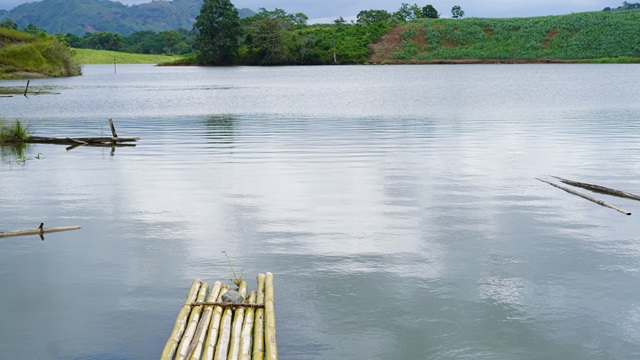
While other Bukidnon farmers had hesitated to plant because of the El Niño phenomenon advisory early this year, Leonilo Arcadio, 49, President of Cabanglasan Farmers Small Water Impounding System Association, Inc. (CAFSWISA) and his fellow members adjusted their planting calendar to assure that they would still have enough water supply should drought hex the province.
It may seem a gamble at first glance, but the SWISA acknowledges the harsh reality that to survive farming in today’s changing climate, they need to adapt.
Early bird catches the worm
Their panuig (first cropping season of the year) usually starts in July. But this year, because of El Niño, they started to prepare their land in April so that they could start planting earlier with hopes of harvesting in August.
“We changed our existing cropping calendar because if ever rain would elude July, we would still have enough water in our small dam,” Arcadio figured it out.
The plan was then presented during the bi-monthly assembly of 50 CAFSWISA members who collectively till 87ha of ricefields.
Leonilo proudly shared that 90% of their members cooperated to change their cropping calendar and planted rice synchronously. Despite this achievement and their efforts, he admitted that there are still members who didn’t participate because they feared the uncertainties.
“Some areas here are newly planted as we just had continuous rain. But most of our members have already prepared their land aligned with our irrigation schedule,” he said.
Water pump
Aside from planting earlier, the association also prepared a water pump should water shortage occur during the flowering stage. The water supply from their mini dam will not be enough to irrigate their crops once it reaches critical level. They have learned the hard way during the past El Niño episode when they only harvested once in 12 months due to a dry spell.
Weather forecast
For Leonilo, watching out for the weather forecasts is helpful. Had it not been for the weather updates, they would not have been informed of the urgency of El Niño that called for planning.
As a farmer, it has been his routine to always wait for the weather forecast on TV every night. He said that there had been many times that his rice field was saved by simply knowing if there’s an upcoming low-pressure area or typhoon.
He added that if he missed the weather updates on TV, he would always watch replays on social media platforms like Youtube.
As of this writing, El Niño effects are yet to be felt by the Cabanglasan farmers. In case the weather disturbance will become alarming, an emergency meeting will be conducted by their Board of Trustees to lay down strategic interventions.
One of the interventions being considered is the change of crop from rice to melon or mungbean, which only need a little water to survive. They are also looking at dividing their members into two groups and selecting who will cultivate rice and other crops that can withstand such extreme weather.
As an association, they have taken every possible measure to prepare strategically for El Niño. However, the true scourge of this event, which may persist until the first half of 2024, remains uncertain.
CAFSWISA farmers said they consistently achieve high yields during panuig but with the looming threats of El Niño, their concerns are mounting. Despite these challenges, their unwavering optimism fuels their determination to outsmart the unpredictable forces of nature.
Only time will reveal whether their preparations and hopes will prove sufficient in the face of this climatic uncertainty.




